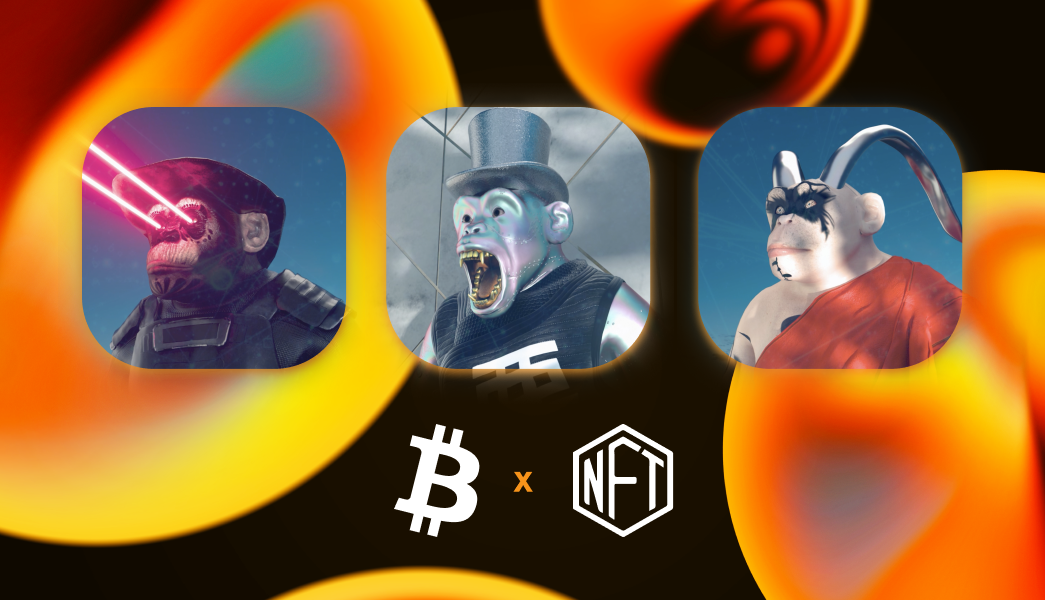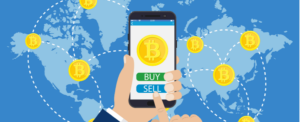After a prolonged period of dormancy, the Bitcoin NFT scene has come to life!
For those who have been around long enough, you might remember Counterparty. Counterparty was a network for custom tokens built on Bitcoin. Despite a promising start, Counterparty never reached its full potential and ultimately was overshadowed by Ethereum smart contracts which have since set the NFT scene ablaze.
Now, with Ordinals, the long-awaited Bitcoin NFT ecosystem is finally here and it has taken off like a rocket!
What are Ordinals?
The smallest denomination of a Bitcoin is a satoshi (aka sat). A Bitcoin can be divided into 100 million sats. Now, a newly developed protocol allows each sat to be inscribed with data. This inscription creates what is called an Ordinal. The data inscribed can include images, text, SVG, or HTML enabling NFT creation.
Ordinals vs Ethereum NFTs: What’s the difference?
At the risk of oversimplifying; Ordinals are NFTs that can be minted on the Bitcoin blockchain. That’s the short version. But there are some important differences between NFTs and Ordinals.
Ordinals exist completely on-chain
Ordinals are a brand new form of digital asset that, unlike Ethereum NFTs, exist completely on-chain. This means that all the data and information associated with Ordinals is securely stored on the Bitcoin blockchain with no external dependencies. This gives Ordinals an extra layer of security and ensures their traceability.
The fact that Ordinals are inscribed completely on-chain is the reason Casey Rodarmor – the man behind The Ordinals Project – refers to them as digital artifacts rather than Bitcoin NFTs. Traditional NFTs often have creator royalties attached to them, too, whereas digital artifacts do not.
Ethereum’s NFT infrastructure is well-established and it currently has a decided edge in tooling. Ordinals, meanwhile, showcase a beautiful simplicity and are also much cheaper to mint than on-chain Ethereum NFTs. Both chains have their own unique security and risk considerations to take into account. The choice ultimately lies with the user.
Upfront cost and risk
Traditionally, on Ethereum, the collector mints the NFT and only pays the creator once they do so. On Bitcoin, the creator is the one that mints (or inscribes) the NFT before selling it to the buyer. So, on Bitcoin, the creator takes the upfront cost and risk before they know for sure if they can sell it.
On one hand, eBay-style auctions remain available on both platforms; however, the upfront model allows creators to showcase their work on public markets without worrying about a potential sale at the end of the auction period. Because every transaction is part of the blockchain’s ledger, collectors can see how much a creator has earned from their collection before buying it. This helps reduce speculation significantly, making it easier for creators to receive financial returns from their efforts without having to wait around for an auction period to end.
Criticism of Ordinals
While The Ordinals Project has thrilled many in the crypto community, it has prompted ridicule and criticism from old-school Bitcoin hardliners who have denounced NFT minting as spam.
Detractors have suggested that Ordinals constitute “lying” and “tricking the code.” Some have gone so far as to claim that inscriptions compromise Bitcoin’s censorship-resistant qualities and have even suggested altering validation rules to prevent inscriptions from being possible. Others have dismissed this criticism of Ordinals as dogmatic Bitcoin traditionalists overreacting to this emerging cultural innovation.
Opportunities for increased MEV
Despite the criticism, Ordinals have shown that they offer value beyond acting as Bitcoin NFTs. Inscriptions offer miners and node operators a unique opportunity to capitalize on additional MEV (miner extractable value).
What is MEV?
MEV refers to the amount a miner can earn from processing transactions in a block. The amount of value can they extract. The debate around MEV is that miners should be paid more appropriately when they process transactions that require larger block space, as opposed to smaller transactions that take up less space.
Demand for block space
As interest in ordinals Ordinals grows, users looking to make inscriptions are forced to compete for limited block space. This allows miners to demand higher fees and grow their revenue. An inscriber could sweeten the deal with a miner by adding an elevated fee to their transaction. Alternatively, inscribers and miners could agree on a separate payment that would incentivize the miner to include the inscription in a block.
By processing and confirming these transactions, Bitcoin NFTs allow network participants to earn additional profits. This is particularly beneficial for smaller miners who may not be able to afford higher validation costs associated with larger transactions. This could prevent larger mining pools from dominating the market and encourage a healthier competitive environment for miners regardless of their size or resources.
One thing is for certain; as demand for Ordinals grows, the extractable value for miners grows with it.
The future of ordinals and Bitcoin NFTs
This new Ordinals scene has taken 2023 by storm and shows no signs of slowing down. It appears as though Bitcoin inscriptions are set to revolutionize the NFT space. The good news for those interested in getting involved is that the days of requiring your own node to interact with Bitcoin NFTs are gone, with a raft of Ordinals-friendly wallets and minting services already in development.
By allowing miners to capitalize on additional fees, Ordinals present an exciting opportunity for both small and large players in the market. Not only does it give smaller participants a chance to compete with larger entities, but it also safeguards against the manipulation of fees by dominant mining pools.
Zooming out, Ordinals might be just a glimpse of what the future holds. What’s to say we won’t see NFTs on other networks like Litecoin or Doge?
It’s very early days, but this exciting new corner of the Bitcoin ecosystem looks like it’s here to stay!



